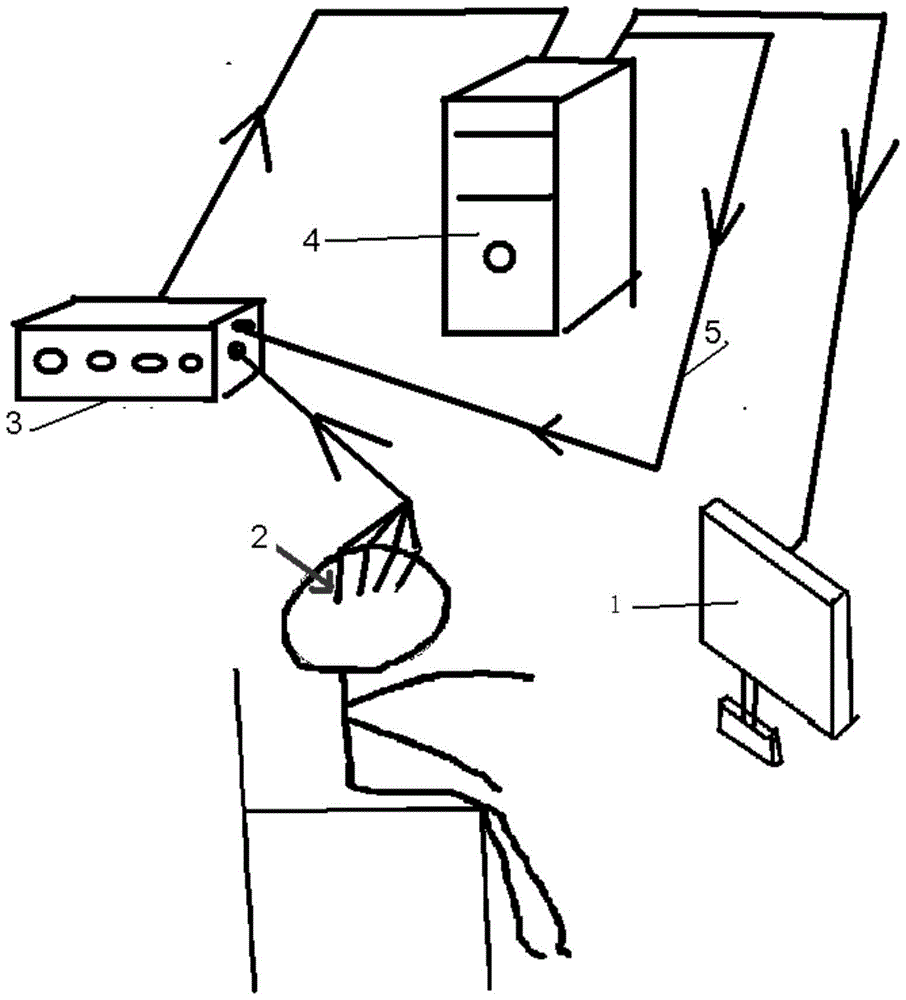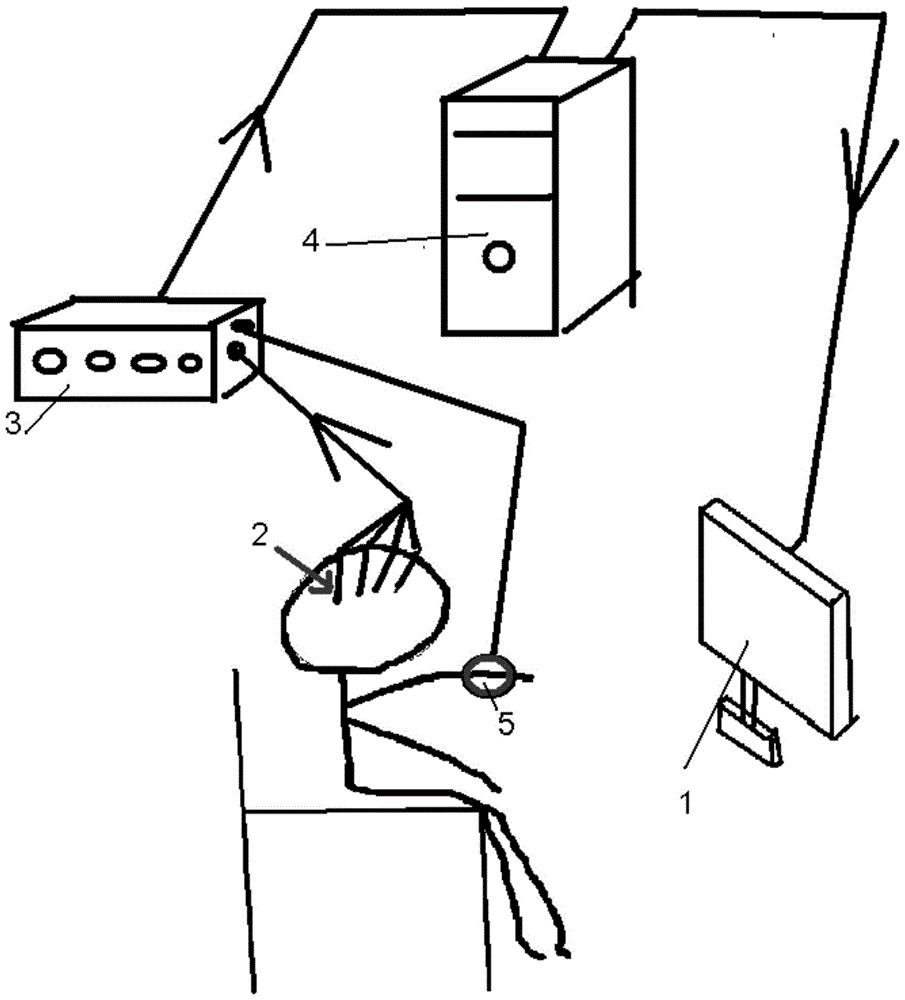Device, method and system for positioning cerebral-cortex functional area
A technology of cerebral cortex and functional areas, applied in the field of neurosurgery, can solve problems such as short experiment time, small amount of calculation, and complex algorithms, and achieve the effects of overcoming the lag of response signals, improving accuracy, and realizing synchronization
- Summary
- Abstract
- Description
- Claims
- Application Information
AI Technical Summary
Problems solved by technology
Method used
Image
Examples
Embodiment 1
[0076] A device for positioning cerebral cortex functional areas is provided in this embodiment, such as image 3 As shown, it includes prompt screen 1, intracranial electrode 2, EEG amplifier 3, computer 4, and myoelectric electrode 5. in,
[0077] One myoelectric electrode 5 is set on the wrist of the subject to obtain the myoelectric signals of fingers, palms, wrists and other parts, so as to obtain the starting moment of the body movement.
[0078] In other alternative embodiments, a plurality of myoelectric electrodes can also be set, which are respectively placed on multiple moving parts of the subject to collect the myoelectric signals of the set parts, such as footsteps, legs, face and other positions.
[0079] There are one or more intracranial electrodes 2, which are respectively set at different positions under the cerebral cortex of the subject, and the intracranial EEG signals of the cerebral cortex at the set position are collected for subsequent judgment of whe...
Embodiment 2
[0085] In this embodiment, a method for locating functional regions of the cerebral cortex is provided, which can be used in the computer in Embodiment 1 and realized by operating instructions with the following functions. Including the following steps, the flow chart is as follows Figure 4 As shown,:
[0086]S1. First, obtain the original intracranial EEG signal and the original EMG signal of the moving part, which can be obtained by the EEG amplifier 3 in Embodiment 1. Using the device in Example 1, the original myoelectric signal can be obtained by the myoelectric electrode 5 arranged at the moving part, and the original intracranial EEG signal can be obtained by the intracranial electrode 2, and then the EEG signal and the EEG signal can be obtained by the EEG amplifier 3 The EMG signals are sent to the computer together.
[0087] S2. Then, separately process the original intracranial EEG signal and the original EMG signal.
[0088] S2-1. For the original electromyogra...
Embodiment 3
[0124] Also provide a kind of cerebral cortex functional region positioning system in the present embodiment, be used in the computer in embodiment 1, comprise:
[0125] Signal acquisition unit: respectively acquire the original intracranial EEG signal and the original EMG signal of the moving part;
[0126] The starting moment acquisition unit: acquire the starting moment of the body movement according to the original myoelectric signal;
[0127] Argument matrix acquisition unit: acquire the argument matrix of the myoelectric signal after the initial moment;
[0128] The intracranial EEG signal acquisition unit: intercepting the intracranial EEG signal of the corresponding time period according to the starting moment of the body movement;
[0129] A response variable matrix acquisition unit: acquire a response variable matrix according to the intracranial EEG signal;
[0130] Correlation calculation unit: calculate the correlation between the independent variable matrix and...
PUM
 Login to View More
Login to View More Abstract
Description
Claims
Application Information
 Login to View More
Login to View More - Generate Ideas
- Intellectual Property
- Life Sciences
- Materials
- Tech Scout
- Unparalleled Data Quality
- Higher Quality Content
- 60% Fewer Hallucinations
Browse by: Latest US Patents, China's latest patents, Technical Efficacy Thesaurus, Application Domain, Technology Topic, Popular Technical Reports.
© 2025 PatSnap. All rights reserved.Legal|Privacy policy|Modern Slavery Act Transparency Statement|Sitemap|About US| Contact US: help@patsnap.com



